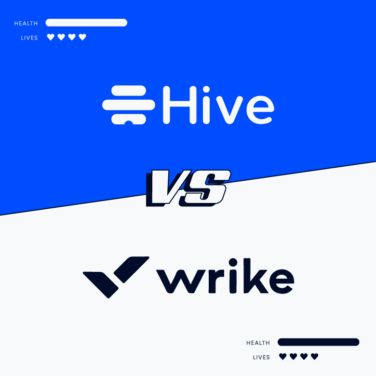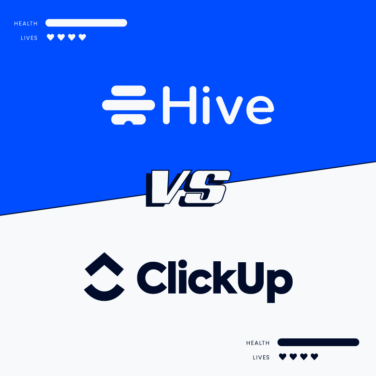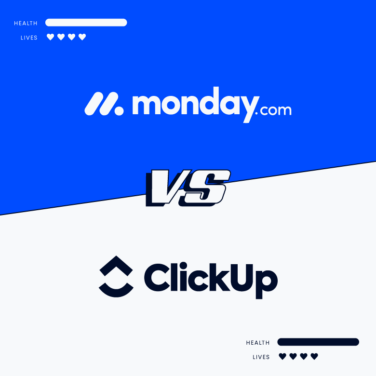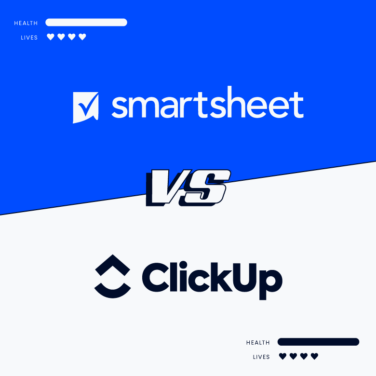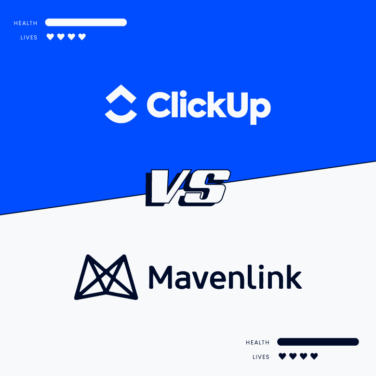Introduction
Wrike and ClickUp are professional services automation software that often gets compared because of how similar they are. Choosing between the two can be difficult, so it is vital to know about the similarities and differences between the two. Knowing the strengths and weaknesses of software can help you determine which between the two will meet the demands of your business.
My goal is to provide you with everything you need to know to get the project management software that will work best for you.
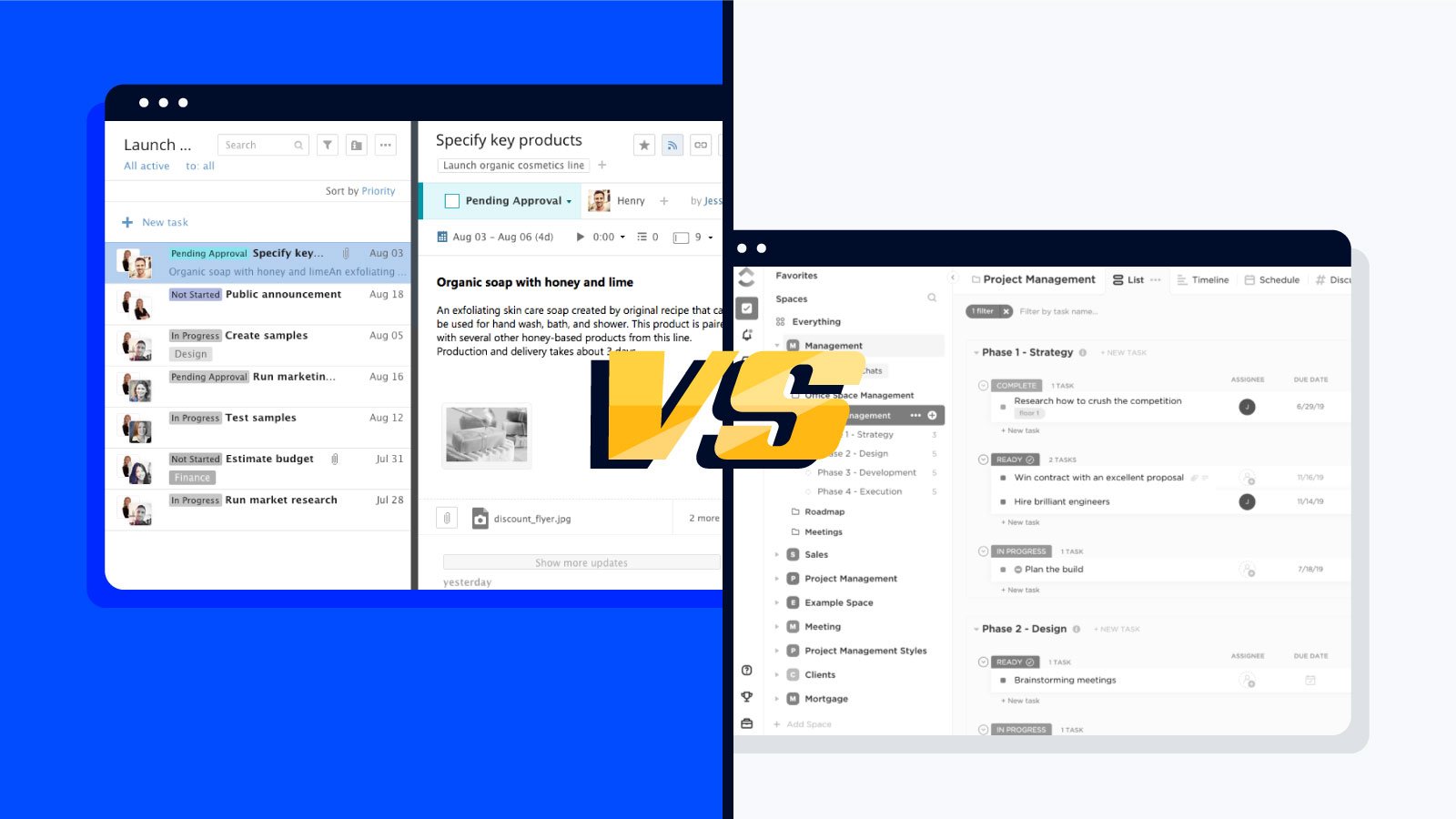
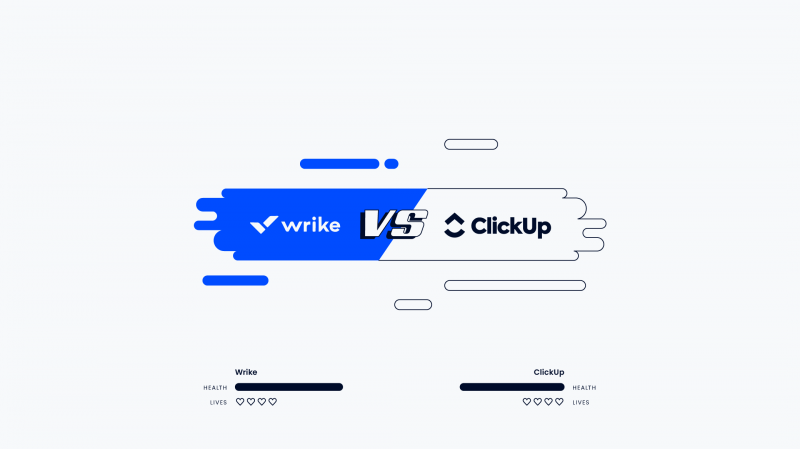
Expert Summary: Wrike vs ClickUp
Wrike and ClickUp are project management software that can help companies improve productivity through a wide range of task management, file-sharing, resource management, and collaboration tools. Aside from Wrike and ClickUp’s native productivity apps, users can integrate additional third-party apps like Asana, Slack, Jira, and Basecamp to ensure that they have all the tools they need to improve work management. Users can also use API to develop their tools if they need special programs to fulfill their company’s unique needs. Users can access Wrike and ClickUp on their workstations or iOS and Android mobile devices through Wrike and ClickUp’s mobile apps.
Wrike would be best for marketers or advertisers who handle multiple clients because of its generous storage space for free plan holders and cloud storage integration.
ClickUp would be best for social media managers because it supports social media integration making managing clients’ social media accounts more convenient.
Side by Side Comparison Of Wrike and ClickUp
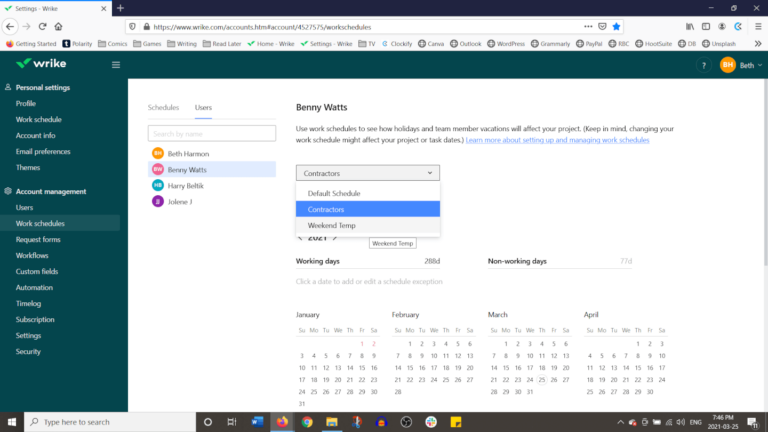
Wrike is a SaaS project management tool that can help users plan, execute and assess projects. It supports the integration of third-party apps and programs such as GitHub, Asana, Microsoft Teams, Outlook, Jira, and Dropbox, allowing users to customize their programs depending on their needs. Wrike supports file sharing making it easier for users to work with other team members while maintaining privacy and data integrity.
Wrike has a free plan with unlimited users and 2GB storage per account.
From $9.80/user/month
Free plan available
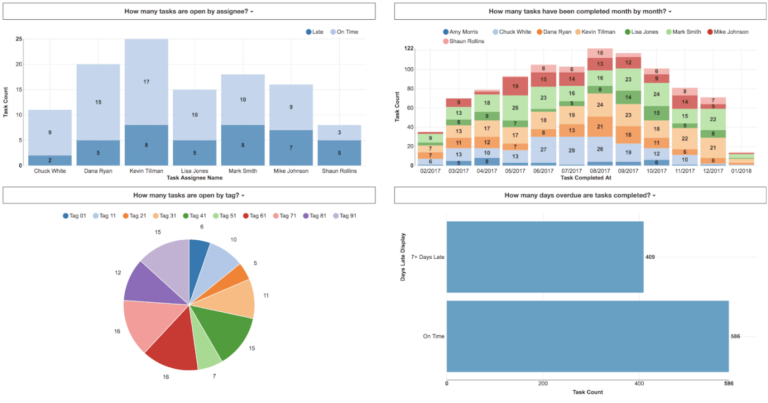
ClickUp is a professional services automation software with resource management, automation, file sharing, and task management capabilities that improve how a team handles projects and crucial tasks. ClickUp allows users to create custom workspaces to work closely with other team members on a project while protecting sensitive information from users who are not part of the team. On top of workstation access, ClickUp also has a mobile app version that subscribers can use when working out of the office.
ClickUp has a free forever plan which includes 100MB storage space.
From $5/user/month
Wrike Vs ClickUp Feature Comparison
Wrike vs ClickUp Comparison Criteria
How did I come up with this comparison article for Wrike and ClickUp? This is the criteria I used in creating this article:
-
Feature list
What do you get, and what do you not get? -
Use cases
What are the most effective use cases for this feature set? -
Ease of use
Is it easy to learn and master? -
Integrations
Is it easy to connect with other tools? -
Customer support
Can you get help easily and quickly? -
Price
How appropriate is the price for the tool?
Differences Between Wrike and ClickUp
Wrike’s free plan comes with a generous 2GB storage space that subscribers can use to store files or data, whereas ClickUp’s free forever plan comes with 100MB of storage.
Wrike’s free plan includes cloud storage integration providing customers with a secure and convenient way of accessing files while ClickUp’s free plan doesn’t include cloud storage.
Wrike has ad hoc reporting functionality to ensure business continuity by allowing members to assign reporting rights to another member in special cases temporarily. ClickUp lacks this functionality.
Wrike has a video proofing feature that enables users to proof and approve video assets, while ClickUp doesn’t have this functionality.
Wrike users can customize their home pages through themes and color schemes, whereas ClickUp doesn’t have this feature.
From $9.80/user/month
Free plan available
ClickUp’s paid subscription plans come with unlimited storage space where users can store vital files or documents, while Wrike’s paid plans have capped storage space allocations per user.
ClickUp supports social media integration to manage their clients’ social media accounts within the software, whereas Wrike users need to use a separate social media app.
ClickUp has a native messaging feature allowing users to instantly connect with other team members for improved cooperation, whereas Wrike users need to install a third-party messaging app.
ClickUp has a gamification feature that counts on team members’ competitive nature to increase productivity in the workplace. This feature is not available in Wrike.
ClickUp has an overtime calculation feature to ensure employees get proper compensation for extra hours and prevent payroll discrepancies and disputes. Wrike doesn’t have this feature.
From $5/user/month
Similarities Between Wrike vs ClickUp
- Wrike and ClickUp both have free forever plans that can help freelancers or small businesses who need PSA software but don’t want to get paid subscriptions just yet.
- Wrike and ClickUp have mobile apps that work on iPhone and Android mobile devices, providing essential productivity tools while working in the field.
- Wrike and ClickUp use Kanban boards and Gantt charts to provide users with a visualization of their progress to give team members a clear idea of the areas they need to concentrate on to meet due dates.
- Wrike and ClickUp have a user-friendly knowledge base with instructional videos, tutorials, articles, and demos that can guide users to make the most out of the software.
- Wrike and ClickUp use agile methodologies to ensure that team members sustain continuous improvements in response to emerging challenges.
- Wrike and ClickUp support the customization of templates so users can design templates and forms that meet a specific client or project’s requirements.
- Wrike and ClickUp support business process automation so users can save time by automating daily tasks and devote saved time to more complicated activities.
- Wrike and ClickUp have a time tracking functionality allowing managers to analyze team members’ time to complete tasks. This provides valuable insights on which skills or tasks members need training on.
- Wrike and ClickUp have idea management functionality helpful in conceptualizing and executing projects because it provides team members with an avenue to share their ideas promote innovation.
- Wrike and ClickUp have a workflow management system useful in organizing people and optimizing workflow to promote team coordination and boost productivity.
Best Use Cases for Wrike vs ClickUp
-
Agile Project Management
Use Wrike to build Kanboard and customized workflows to best suit your Agile project management team. -
Client Management
Use Wrike for adept client management and professional services with collaborative planning tools, full project visibility, and automated approvals. -
Remote Work
Use Wrike to organize a remote workforce with in-browser and smartphone app access for a go-anywhere digital workspace. -
Business Process Management
Use Wrike to create customizable, sharable dashboards that enable team leads to monitor and improve processes. -
Event Planning
Use Wrike to visualize your event checklist and keep the whole team’s calendars automatically insync. -
Product Roadmap
Use Wrike to visualize each roadmap stage using easy-to-build Gantt charts that highlight project launch priorities. -
Creative Teams
Use Wrike to organize creative requests, visualize your workload, clarify feedback, and publish assets with ease. -
Marketing Teams
Use Wrike to optimize digital ROI with instant insights into up to 50 channels including all popular social platforms. -
IT Teams
Use Wrike to build custom request forms for all IT ticket requests that can be set-up to automatically turn data into tasks.
-
Agile Teams
ClickUp’s features are perfect for agile teams to create customized funnels and manage sprints, build Scrum charts, and track issues. -
Remote Work
ClickUp is cloud-based, so remote teams can use it to collaborate on documents and work on tasks no matter where they are. -
Human Resources
ClickUp’s document storage and management, as well as inbuilt performance tracking, make it ideal for HR teams. -
Design Teams
ClickUp has collaboration features like comment sharing and file proofing, which are essential for design teams—especially in a remote environment. -
Finance Departments
ClickUp allows teams to manage accounts, track project budgets, and tie financial goals into project progress. -
Product Development
ClickUp has sprint and backlog templates that development teams can use to manage product launches. -
Marketing Agencies
ClickUp makes it easier for creative agencies to collaborate with clients and get approval for assets. -
Sales Teams
ClickUp allows sales teams to track leads and prospects and collaborate on deals. -
Healthcare
Use ClickUp’s HIPAA-compliant enterprise-grade plan for healthcare projects and team management.
Wrike vs ClickUp Pricing Comparison
This side-by-side price comparison shows Wrike’s price compared to ClickUp.
Wrike Pricing
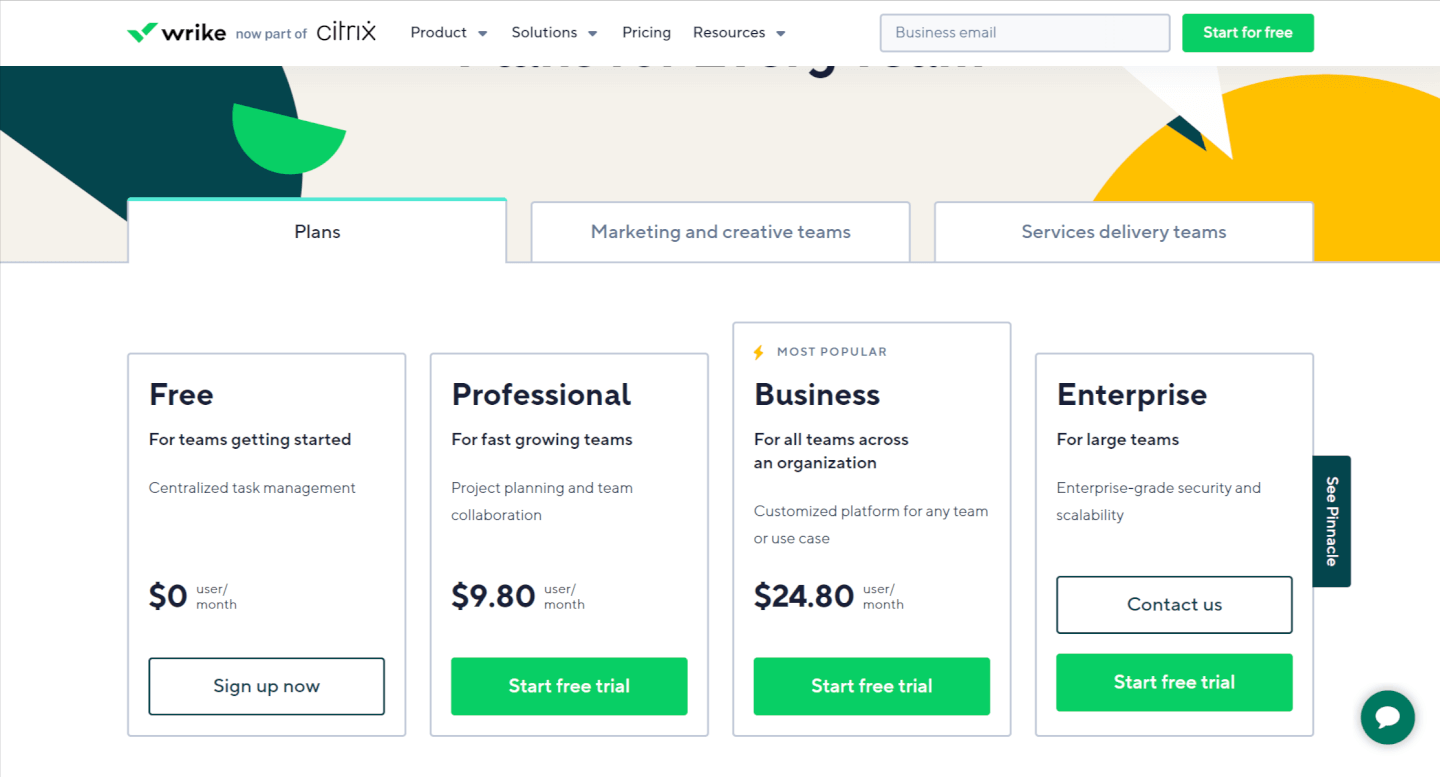
ClickUp Pricing
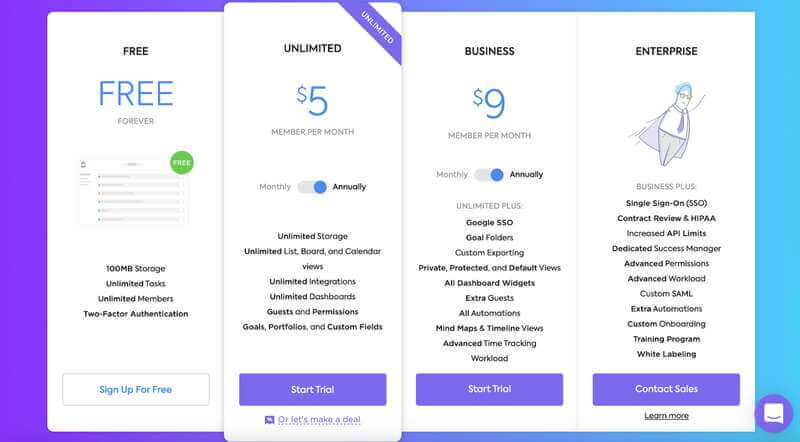
Alternatives to Wrike and ClickUp
Other Wrike and ClickUp Software Comparisons
If you’re still looking at the options for professional services automation software, check out our comparison with other tools.
Wrike Comparisons
Here are some other project management software comparisons with Wrike:
ClickUp Comparisons
Here are some other project management software comparisons with ClickUp:
Conclusion
Wrike and ClickUp are both awesome options if you want to try out some free project management software. Wrike has more feature limitations to consider but what you do have access to you can use for life. ClickUp gives you more free stuff right off the bat but usage of each item (like charts and graphs) are limited to 100X or less. Which will you choose? Let us know your thoughts in the comments.






